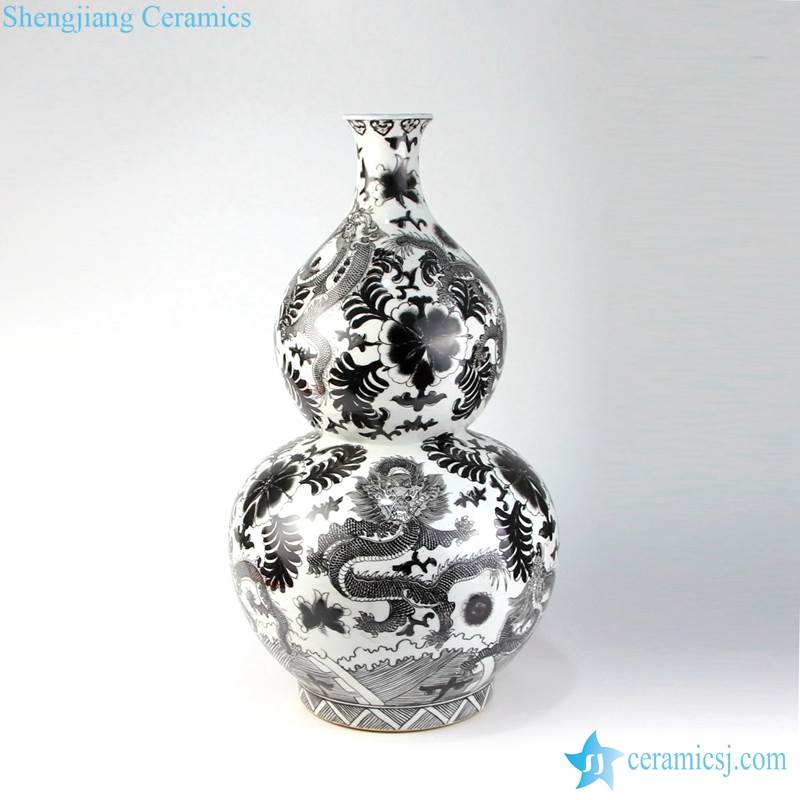There are three basic categories of pottery: earthenware, stoneware and porcelain. They vary according to the clay used to make them, and the temperature needed to fire them.
Earthenware
This is the longest-established type of pottery, dating back to the Stone Age. Although its composition can vary significantly, a generic composition of earthenware clay is: 25 percent ball clay, 28 percent kaolin, 32 percent quartz, and 15 percent feldspar. It is the softest type, being fired at the lowest temperature. It is porous (absorbs water) and easily scratched. To make earthenware objects waterproof, they need to be coated in a vitreous (glass-like) liquid, and then re-fired in the kiln. The iron-content of the clay used for earthenware gives a colour which ranges from buff to dark red, or even cream, grey or black, according to the amount present and the atmosphere (notably the oxygen content) in the kiln during firing. Earthenware can be as thin as porcelain, but it is less strong, less tough, and more porous than stoneware. Generally speaking, earthenwares are fired at temperatures between 1000-1200 degrees Celsius. The category of earthenware includes all ancient pottery, terracotta objects, 16th century and later Japanese and Chinese pottery, as well as European pottery made up to the 17th century. In particular, it includes maiolica (faience or delft) a tin-glazed style of earthenware. The greatest examples of fine art earthenware are undoubtedly the series of Chinese clay warriors, known as the Terracotta Army.



Stoneware
Called stoneware due to its dense, stone-like character after being fired, this type is impermeable (waterproof) and usually opaque. In its natural state stoneware clay is grey but the firing process turns it light-brown or buff coloured, and different hues may then be applied in the form of glazes. Generally speaking, stonewares are fired at temperatures between 1100-1300 degrees Celsius. Stoneware clays are used in the manufacture of commercial ware, but are also preferred by artists (eg. Bernard Leech et al) creating fine art pottery. The earliest stoneware was produced during the era of Shang Dynasty art in China (c.1400 BCE); it first appeared in Europe in Germany (the Rhineland) in the 15th century. Later in the 17th century, English ceramicists first began producing a salt-glazed form of stoneware. Enhancements followed in the 18th century when Josiah Wedgwood created a black stoneware (basaltes), as well as a white stoneware known as Jasperware.



Porcelain
The distinction between porcelain and stoneware is rather vague. Chinese ceramicists define porcelain as any pottery item that gives off a ringing tone when tapped, whereas in the West it is distinguished from stoneware by its characteristic translucence when held to the light. According to the Combined Nomenclature of the European Communities, “Stoneware differs from porcelain because it is more opaque, and normally only partially vitrified.”
Chinese porcelain first appeared in China during the era of Han Dynasty art (206 BCE-220 CE), or perhaps later in the era of Tang Dynasty art (618-906), using kaolin (white china clay) and ground petuntse (a feldspathic rock). However, enhancements were made during the eras of Song Dynasty art (960-1279) and Yuan Dynasty art (1271-1368), as well as Ming Dynasty art(1368-1644). Sixteenth century Florentine ceramicists tried to reproduce its unique translucence by adding glass to clay (creating a form known as ‘soft’ porcelain) but the formula of the true or hard type of Chinese porcelain was not discovered until the 1700s in Meissen and Dresden, Germany, when ceramicist Ehrenfried Walter von Tschirnhaus and alchemist Johann Friedrich Bottger began using ground feldspathic rock instead of glass. Later English ceramicists like Josiah Spode varied the German formula by adding powdered bone ash (a calcium phosphate) to make bone china – the standard English type of porcelain which is less prone to chipping and has an ivory-white appearance. The Continent still favours the German type of porcelain while Bone china is more popular in Britain and the USA.
The colour of unfired porcelain clay can be anything from white to cream, while bone china clay is white. After firing they are both white. They are typically fired at temperatures between 1200 to 1450 degrees Celsius, a little higher than stoneware.





